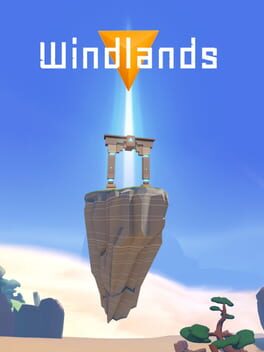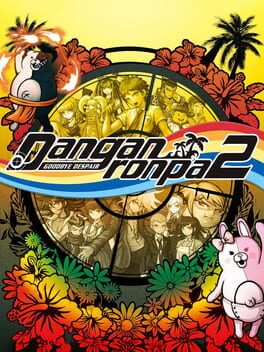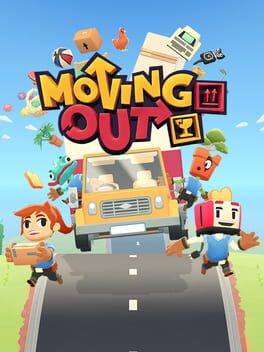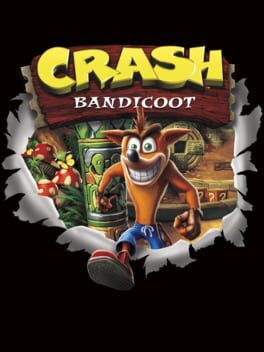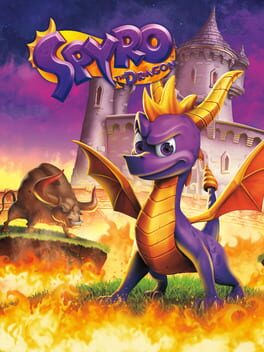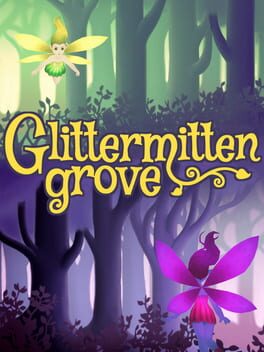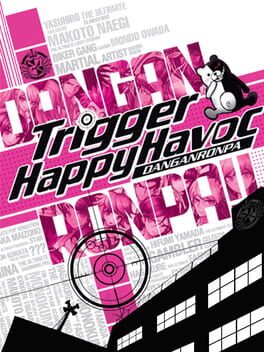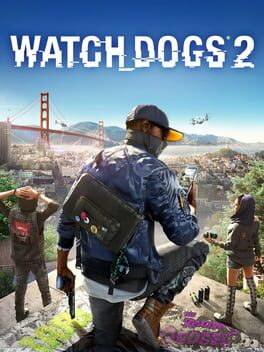Lobst
2016
Windlands is still a satisfying ride in 2021, a colorful 3D platformer with easy-to-pick-up swinging mechanics and a brief (but sprawling) campaign that teaches you how to manage momentum to a surprising level of depth. It's also a pretty good way to get your VR sea legs, since over the course of my time with it I went from having to play in 20-minute segments (before I'd get too tense and borderline-nauseous) to spending over an hour in the game per session without difficulty.
Some of its cases are a little too self-aware for their own good, and one or two ignore rules established by the series, but I lived for the overall story, which itself loves to toy with expectations of the audience that played the first game. While many sequels that say "Whoops, get ready for the same scenario as the first installment but with a fresh coat of paint!" fall flat on their face, I think this one very effectively justifies itself from both lore and thematic standpoints, and I found myself thinking about it for days after hitting credits. (I will not miss Improved Hangman's Gambit or Logic Dive.)
2020
Played this cooperatively with my partner. The action is hectic and filled with interesting cooperative challenges that don't outstay their welcome, enough that we leapt into secondary level objectives immediately after credits rolled. My only complaint (and it's not much of one) is that the dialogue is a bit crude and overly referential in places, but like the recognizable elements in its soundtrack, it's complemented by more than enough craft and originality that it was hard for me to fault.
2017
Another one I played when the original came out. I appreciated the remake for the most part, though I'd like it a lot better if it didn't force its player into challenges that take place almost entirely on the depth axis, which the game's lack of camera control (a faithfully recreated element from the PSOne original, due to a tech limitation in how it loaded its content from its disc) prevents the player from adequately gauging.
2018
I played the original Spyro the Dragon when it first came out; I was glad to see that this gameplay format still held up for me. Typical of games by Insomniac, this one uses its level geometry, visual design, and collectible placement all to great effect at highlighting for the player where to go/what to do next. The remake's graphical improvements are gorgeous and very much appreciated, but they also occasionally mess with that highlighting by making everything look so good that some optional areas and items don't stick out enough. I'd call that a minor complaint, though. There aren't many games in the 3D platformer genre that flow anywhere near as smoothly as Spyro 1, and that level of flow is likely going to be the factor that has me returning to it in the future.
My best hours with this were spent cautiously exploring new areas and sparring with difficult bosses (the DLC was especially great for this); my worst were spent grinding for resources and not knowing where or how to proceed. I still appreciated its lack of straightforwardness most of the time, considering in comparison how insistent many modern games are to restrict your ability to venture off the beaten path and make big mistakes. I don't think its approach is ideal, though; there's very little guidance on how to spec a character, and the lack of a respec utility had me questioning in the late-game whether I was dead-ending myself with my DEX build. Still, I was able to make it through, which should prepare me well for the next time I visit its world.
Realistically, there are dozens of better racing games than this, and the Kudos system is easy to exploit, but I still have a soft spot for MSR as wide as an ocean. The racing action itself is different enough from modern games (more focused on incremental improvement than overtaking opponents) and fun enough on its own to immerse in, but at least one full star of this score goes to how its ingame radio contains a Sonic R's worth of sappy original songs by vocalist TJ Davis and composer Richard Jacques.
2016
It's quite a bit different from its developer's previous work, but the premise of Glittermitten Grove nonetheless sets up a sprawling adventure filled with discoveries designed to intrigue and delight its player. It's a good framework and it kept me hooked, but only a few of its experimental minigames are successful; some of them seem to have been built for 2016 gaming's cultural zeitgeist and millennial nostalgia, both of which have started to show their age less than five years later. Even so, my partner and I had a great time finding Glittermitten Grove's secrets together, solving its world's puzzles, and eventually hitting credits.
Danganronpa's story is unashamed to be silly, and there are plenty of holes you can punch through it. Some characters have motivations that make absolutely no sense (it's kind of necessary for a Lord of the Flies story to happen), there's risque fanservice at inappropriate story moments (why does the camera need to be there?), and some chapters are flat-out misguided in what they try to teach (the case just before the rec room opens up is a notorious offender). Even so, the story as a whole is still great at communicating its motif of hard lessons, introducing you to essential qualities about its cast, and encouraging you to view those qualities in contexts that might completely change your perception of their value.
The make-or-break of it comes down to what you're willing to forgive, and whether you view its specific brand of silliness as a strength. I love when voice actors ham it up, so Monokuma utterly stole the show, and many of the other characters are just as dynamic and well-performed. I found the trials to be exciting, too; I only referred to a walkthrough in situations where I felt like I knew the answer and I needed to figure out how to communicate it to the game, and I think that's the way to go.
The make-or-break of it comes down to what you're willing to forgive, and whether you view its specific brand of silliness as a strength. I love when voice actors ham it up, so Monokuma utterly stole the show, and many of the other characters are just as dynamic and well-performed. I found the trials to be exciting, too; I only referred to a walkthrough in situations where I felt like I knew the answer and I needed to figure out how to communicate it to the game, and I think that's the way to go.
1998
Banjo-Kazooie is the platonic ideal of a video game to me; all throughout its assortment of colorful levels are opportunities to see and learn new control modes and special moves for its title characters to interact with the game world, either asking you to use them skillfully or cleverly to earn the next jigsaw piece. It can sometimes be unclear what to do next, and a game with this level of variety is obviously not going to be 100% perfect (ah, a refreshing game of Concentration awaits around the corner), but despite those shortcomings, Banjo-Kazooie is nevertheless so well-paced and courteously laid out that it maintains its appeal where many other 3D platformers fall short. Loads of secrets, too!
1994
I've heard EarthBound's attitude and aesthetic described as "somewhere between a dream and a nightmare" and I think that's accurate. The game itself is a personal journey from the ordinary to the extraordinary, with hectic and reflective moments alike, and ironically, in its modesty and unwillingness to incorporate RPG trends of the era, has aged beautifully from just about every angle. IMO, it's worth playing both as a part of game history and as an original work on its own terms.
2013
Anodyne is happy to leave you with the impression that it's a quirky little trip (and deserving of appreciation/analysis on that front) but also very willing to reward observation; its mechanics are simple for a top-down action game, and it tells its story in bits and pieces with wide gaps for the audience to fill in on their own. Combined, these aspects result in a campaign that's practically free of filler material, assuming you like what's on the surface to begin with and are willing to trust that the game knows what it's doing. I personally did on both fronts, and I now consider it one of my favorite games of all time.
2016
Watch Dogs 2's campaign is secondary to the experience of roaming around its simulated Bay Area, getting into impromptu adventures, and interacting with its people. IMO that's a good thing, its story is centrist pop-culture snark roleplaying as leftist hacktivism; in my experience it doesn't diminish from the fun of moving around and finding new things. It's also greatly helped by the personality of its main character, which shines through even if you treat the story as background noise.
It's been years and the game still hasn't exhausted its mechanical value for me. Sometimes I'll fire it up with the goal of seeing some new scenery, racing through the wilderness, taking some selfies, finding a nice outfit, or inconspicuously ruining the day of some demonstrably awful person. Whether by accident or not, this game is great at supporting the generation of these stories, and it seems like it'll be a while before anything comes out that does a better job.
It's been years and the game still hasn't exhausted its mechanical value for me. Sometimes I'll fire it up with the goal of seeing some new scenery, racing through the wilderness, taking some selfies, finding a nice outfit, or inconspicuously ruining the day of some demonstrably awful person. Whether by accident or not, this game is great at supporting the generation of these stories, and it seems like it'll be a while before anything comes out that does a better job.
2001
I'm a fan of rhythm games of all shapes and sizes, but StepMania specifically has a place in my heart for how it takes the concept of the full-body rhythm-game genre and effectively removes several barriers the money-hungry and churn-heavy videogame industry has put on it. Where Rock Band produces DLC for a playerbase limited by diminishing hardware supply and Just Dance locks its content down behind streaming servers, StepMania has an endless amount of stepcharted songs to experience. Want to play? If your PC has a keyboard, you're good to go. Want to make a chart? Take an MP3 and plop some arrows down in the ingame editor. Want to dance? You can buy a USB soft pad for $20, buy something better from a third-party manufacturer, or build your own using an online tutorial. It's a model that's possible only through the tireless work of a dedicated community, and it ensures that floor-mat dance games will still be played long after StepMania's contemporaries have shut down.
